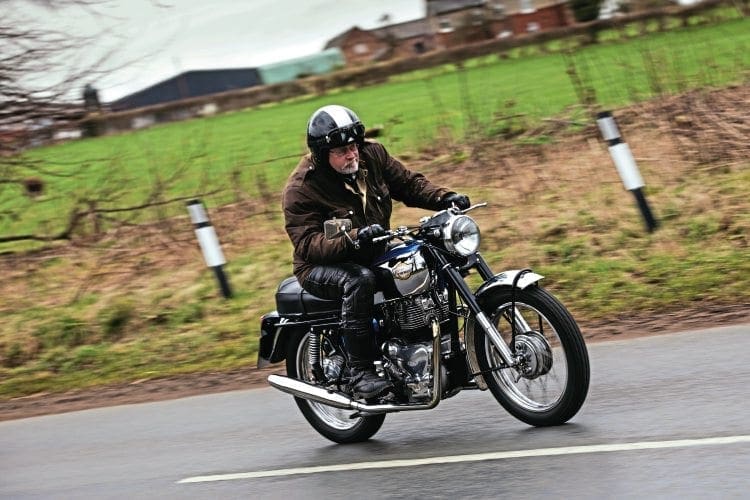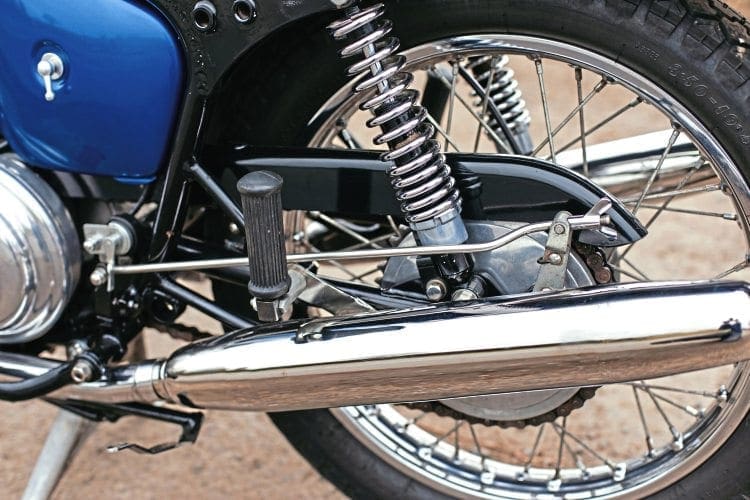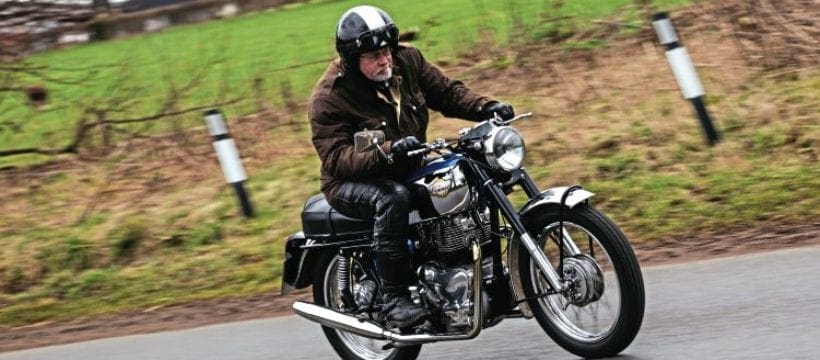Words: Oli Hulme, Photography: Gary Chapman
Royal Enfield’s constellation is a beefy beast with the personality and aggression of a Pontypool rugby prop forward from the Sixties – big hearted and ready to trample the opposition.
The 692cc engine is squeezed into a frame derived from the 350 Bullet, and this punchy and muscular motorcycle is a piece of late 1950s brutalism, covered in chrome.
Enjoy more Classic Bike Guide reading in the monthly magazine.
Click here to subscribe & save.
The Constellation was born out of the range of twins Royal Enfield launched in 1948 with their 500 Twin that grew into the touring 692cc Meteor in 1953, which in turn was joined by the sportier Super Meteor before the Constellation arrived in 1958, having at first been an export-only model branded as an Indian Apache for the US market.

Why a 700? The engine of the Constellation was essentially two 350 Bullets, with two separate cast-iron barrels and twin alloy heads. There was barely an inch of spare space around the mill, though you could remove the tappet covers and set the valve clearances without taking the tank off.
Like they had with the Bullet, Enfield built the oil tank into the crankcases with the filler sticking out of the right-hand side. This meant that the bike didn’t need an external oil tank, which kept the plot compact, removed the need for external oil lines and allowed the use of a cylindrical oil filter, but did reduce the oil capacity to four pints.

With the oil inside the crankcases it meant that once things were hot, they stayed hot.
The frame used the bolted together engine and gearbox as a stressed member with no lower frame rails. The engine produced the kind of vibration you got from any 360˚ parallel twin, though the Constellation was better than most.
Despite this, with so many parts bolted together, those who rode their machines hard could find the engine working loose in the frame.
The Constellation had a new design of crankcase, as Royal Enfield found their old dies were worn out.
This gave the designers the chance to fit the camshafts higher and make the pushrods shorter, even though the Constellation had a long stroke engine. The barrels were so deeply set in the crankcase that they were almost oil-cooled.

The crankshaft was beefed up, there were special Nimonic valves, developed from those fitted to BSA’s Gold Star, and a single Amal TT racing carb.
Electricity was provided by an alternator, while sparks came from a Lucas competition magneto with a manual advance/retard.
Read more and view more images in the June 2019 issue of CBG – on sale now!
Advert
 Enjoy more Classic Bike Guide reading in the monthly magazine. Click here to subscribe.
Enjoy more Classic Bike Guide reading in the monthly magazine. Click here to subscribe.


